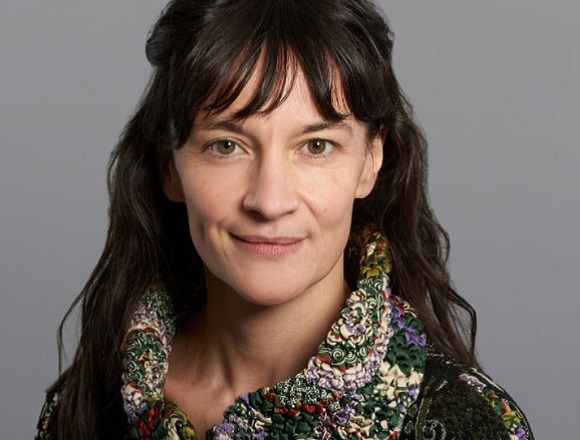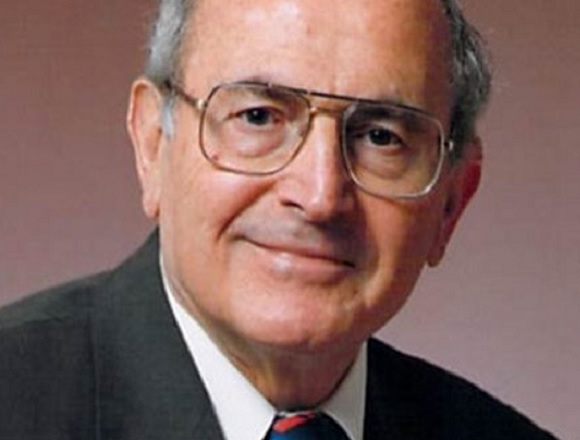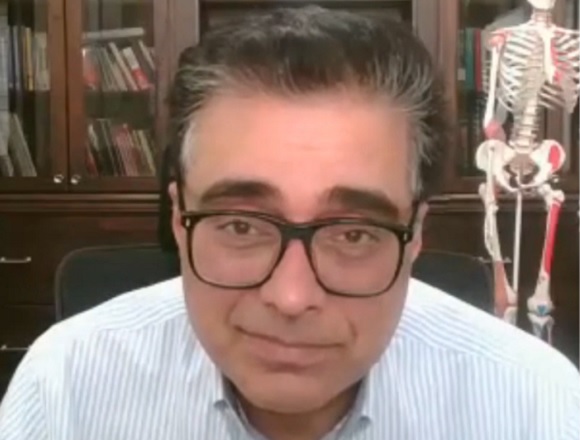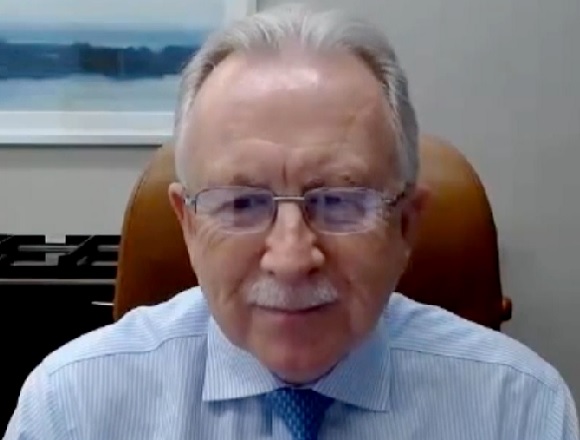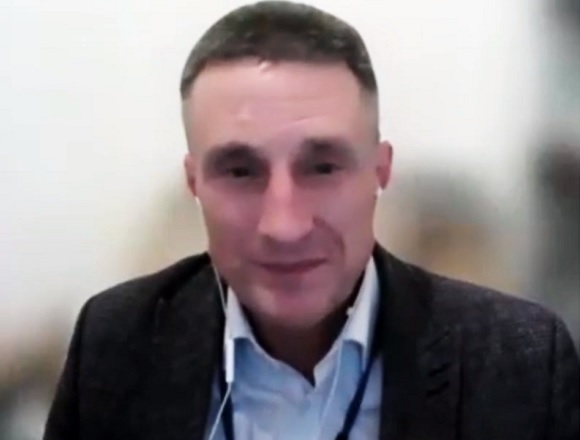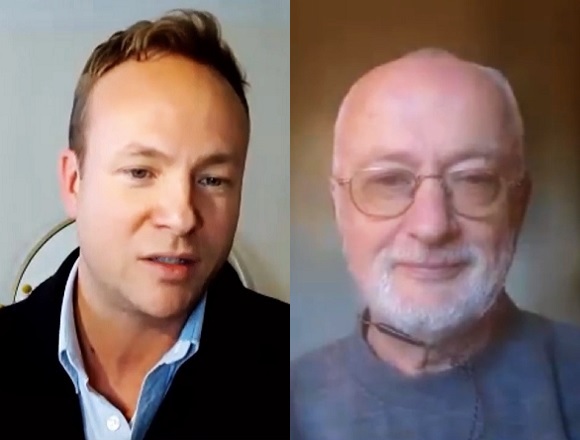Michael A. Weber, MD, preventive cardiologist and hypertension specialist at the Downstate College of Medicine of the State University of New York, USA, joins Roman Jaeschke, MD, MSc, critical care physician and methodologist, to discuss the management of hypertension in the past and now, in the era of expanding armamentarium of antihypertensive drugs.
Contents
- History of hypertension management
- Target BP in the treatment of hypertension
- Role of diuretics in hypertension management
- Role of beta-blockers in hypertension management
- When to take antihypertensives during the day?
- I have high BP – could I have a drink?
- What if “obvious” drugs do not work/can’t be used?
Transcript
Roman Jaeschke, MD, MSc: Good afternoon. Welcome to an interview with an opinion leader, which is done within the realm of McMaster Perspective.
It’s my pleasure to introduce Professor Weber, who has been a giant in the field of hypertension over the last few decades. Professor Weber, maybe, if you don’t mind, let me ask you to tell us where you are these days. What are you doing? What is your hypertension activity? We obviously know about you being an editor of a most prominent hypertension journal. The floor is yours for the time.
Michael A. Weber, MD: Thank you. Well, I’ve had a good fortune. As you’ve already heard, I’ve spent 30, probably close to 40 years now, working largely in the field of hypertension. I sometimes call it preventive cardiology, but my main interest has been in high blood pressure.
Currently I’m at the State University of New York, the Downstate Medical Center in Brooklyn, which is one of the oldest medical schools in the United States. We’re very proud of the fact that so many of our graduates are, in fact, now teachers at other medical schools throughout North America.
I had the good fortune to do training at New York University and at Cornell in New York. I had the opportunity to work with some of the early pioneers of hypertension and I was in the room—going back now, oh, goodness me, a good 40 years… then just a student—with people like David Baldwin, and Dr [Herbert] Chasis, and Dr Saul Farber, who were then the gurus of hypertension, when they were stunned by a paper that had just come out in the Archives of Internal Medicine and also in the New England Journal of Medicine, where for the first time ever they showed that using medications to treat hypertension not only reduced the blood pressure but significantly reduced mortality and other major endpoints, particularly stroke. That was the moment from which hypertension really became a discipline.
Roman Jaeschke: Well, I’m old enough to remember the time where we were taught that every person should have systolic blood pressure that would be 100 plus age. So if you are 70, it would be 170 [mm Hg]; if you are 80, it would be 180 [mm Hg]. Obviously, we are a long time away from this. You’ve spent a journey in this area as a researcher, as a clinician, as an educator. I wonder if you could reflect on the milestones in your journey. You already mentioned the first one.
Michael A. Weber: Yes, I did. I think the next milestone was the understanding that we actually could find reasons for high blood pressure, not necessarily the complete reason, which, to be honest, is still eluding us to some extent.
For instance, the discovery of the renin-angiotensin system (RAS), or at least not its discovery—it had been known already for a long time—but the recognition that the RAS plays an important part in hypertension, which was very revolutionary back in the 1970s. Afterwards, of course, we learned that it was also a cornerstone of the issues with heart failure (HF), kidney disease, and so forth.
In fact, I took a few years out of practice to do a PhD, actually studying how renin was regulated, how its release from the kidney was regulated. I’ve always had a soft spot for the angiotensin-converting enzyme inhibitors (ACEIs) and the angiotensin receptor blockers (ARBs), which in a sense stemmed from the work that I did following in the footsteps of people like John Laragh. That was, to me, another important milestone.
Then we get into the SHEP trial that was published in the early 1990s, which showed that it was feasible to treat all the people with predominant or pure systolic hypertension. Getting back to the point you made earlier that for many years people thought it was perfectly normal to have a systolic pressure that equaled 100 plus your age, here was a study where they took people over the age of 60 years and they had to have a systolic over 160 [mm Hg], randomized them to treatment with placebo or with effective therapy—they happened to use a diuretic—and then, if I recall correctly, methyldopa was added, if needed. They reduced the systolic blood pressure and, goodness gracious, there was a 36% reduction in strokes, a 36% reduction in myocardial infarction, and suddenly it became perfectly fashionable to treat older people.
Just to stay in that theme for a moment, if I may, later studies—such as perhaps the most famous of them all now, the study called SPRINT, where they actually went down to treating people to systolics of 120 [mm Hg]. I mean, unheard of and certainly not for old people, except guess what? They included in this huge trial a large cohort of people aged 75 and above, the average age was 81 years. And guess what happened. When their pressures were reduced to 120 [mm Hg], as compared with reducing them to 140 [mm Hg], [there was] a 33% reduction in mortality. I mean, forget all the other nuances. Fewer people died. It was as simple as that.
I think that really woke up the world of hypertension. That was another important endpoint. I think the message I learned, and I think we’ve all learned, [is] it doesn’t matter whether you’re young, whether you’re old—the lower your blood pressure, the better off you are. You don’t have to be down to 120 [mm Hg]; 130 [mm Hg] is pretty good. I think the Canadians, in fact, have led the world with their guidelines, which are really quite aggressive in that direction.
Roman Jaeschke: As an older person, you tend to be conservative. I have to say we survived a few revolutions, which you just mentioned, and I wonder how many dogmas that we carry in medicine these days will still be there in another 10 or 20 years.
Professor Weber, you took us through this journey; the journey was essentially ending up with new information. You can lower it, you can make it better. The more you lower, probably the better you are. What is your elevator-type advice to a person these days in terms of what should be our target? If somebody asks you and you want to answer them in 1 or 2 minutes.
Michael A. Weber: Now you’re getting to the core of the problem that we’re facing, and let’s put it in the context of where we are in the United States. You’re actually better off in Canada, but in the United States, barely half of hypertensive patients have a blood pressure <140/90 [mm Hg], and only 25% of people with hypertension have a blood pressure <130/80 [mm Hg], which is the current recommended guideline. We’re doing a very inadequate job as a profession overall in managing hypertension.
Now you say, what should our target be? My answer right now is do whatever you can, because any way you can reduce blood pressure is an important start. I think what’s happened is that doctors have become so busy these days with electronic health records, which everyone said, “Oh, that’s wonderful. That’s going to make medicine easier to practice, we’ll have all those prompts. We won’t forget things. Everything is going to be organized for us.” In a sense, yes, they’ve got all those prompts. They tell us, “Do this, don’t forget that. Make sure you renew this. Make sure you send the patient for that.” But guess what? We’ve no time left over to talk to our patients about high blood pressure.
The way blood pressure is measured in most people’s offices isn’t poor, it’s absolutely dreadful. It’s a joke. And so, so many of our patients think their blood pressure is okay. They’re on 1 medicine, they’re on 2 medicines, whatever it might be. They may or may not be taking them. They go to the doctor, whoosh, whoosh, they measure their blood pressure. “Oh, you’re doing fine. Don’t worry about it. Let’s talk about other things.” That is a terrible problem now.
For the first time, we have reversed the improvement in hypertension outcomes. I would say, from the 1960s to about 2014, a nice long space, ~40 years or more, we saw a progressive improvement in blood pressure control and a progressive reduction in the consequences of hypertension: fewer deaths, fewer heart attacks, fewer strokes, less HF, less kidney disease. And then from 2014 to 2018, before coronavirus disease 2019 (COVID-19)—so we can’t blame COVID for this—we started seeing blood pressure for the community going back up again and outcomes getting worse again.
Part of that, I’m afraid, is due to the fact the doctors are so busy that they are not spending time on hypertension; they’re not talking to patients and not explaining that hypertension is really so important as the leading cause of strokes, and heart attacks, and HF.
Roman Jaeschke: Right. And it’s not only doctors who need to be part of the equation. It’s also patients who would understand the importance of it and translate it into compliance.
Michael A. Weber: You’re absolutely right. Compliance or adherence, whatever word you want to use, is the main reason for poor outcomes. Easy for me to say, “Oh, I’m going to start you on this” or “I’m going to increase you to that.” Write a quick prescription or type it in and, whoosh, it’s going off to the pharmacy. Twenty percent of patients don’t even go to the pharmacy to pick up the medicines. Those who do, another 20%, don’t open the bottle and start taking the pills.
It goes on and on from there. We really have to spend time again explaining to patients why we worry about hypertension. To me, that’s the key missing link in all of this hypertension story.
Roman Jaeschke: If I hear you correctly, your answer to the threshold level would be as follows. (1) Treat hypertension. (2) Talk to your patients. (3) Lower the high blood pressure. (4) Worry about the exact threshold at the very end. The exact threshold may be as low as 130 [mm Hg] or 120 [mm Hg], providing that the patient tolerates it well. Would that summarize today’s view, which may change?
Michael A. Weber: Indeed, it may change, but yes, that’s a good summary. If people were doing what you just described, I think, we would have far more good management going on here in the States and even to some extent in Canada.
What’s good in Canada is you have a very lively hypertension society that makes itself heard and gets good hypertension management incorporated into so many practices across Canada. I know in Canada, as in many other countries, including here in the States, we don’t have unlimited resources. Doctors are also very busy in Canada. They also don’t have enough time to do everything they’d like to do, but at least hypertension is more forward in their minds. I think they spend a little bit more time really emphasizing the importance of controlling blood pressure. It’s a tough task.
Roman Jaeschke: I hope it’s not a matter of the grass is always greener on the other side. You know, we do have our own problems.
Thank you very much for this part, which really dealt with general comments on the history of hypertension and the current state. I would like to ask you now, Professor Weber, about a few things that are more specific in hypertension management.
The first one is, if somebody asks you, how should we measure the blood pressure in the office, which corresponds to some degree with the ways how the studies were done, what’s your short advice?
Michael A. Weber: A short advice is to follow exactly what Dr Martin Myers in Canada, and then the Canadian Hypertension Society, and now just about every other society around the world have suggested, and that is to use automated oscillometric devices, the sorts of devices you can buy in the drug store or other places, which cost about $40, $50, so you don’t need to get a fancy one. They all have the same basic works. Make sure that it’s a validated model and that is an excellent way to measure blood pressure. It’s hands off, you put the cuff on.
The beauty of it—and this is the secret to getting control over blood pressure—the patients can have the same blood pressure device in their homes. They can follow their own blood pressure. People who follow their own blood pressure tend to have good results because in a sense they become their own doctor. If the blood pressure remains too high, they will let you know and you can adjust the prescription. I think that is the key to improving things. And that really did come from Canada and we’ve learned from it.
Roman Jaeschke: Some good things come from here. The second question, which I would have: do you have an opinion about a single high-dose versus multiple-drug smaller doses of antihypertensives?
Michael A. Weber: Yes, I do. I don’t think that single high doses work that well in most people. You usually need ≥2 drugs. However, I’m not a big fan of this new trend that some people are advocating, putting 3, or 4, or even more low-dose medicines into one tablet or one capsule. Yes, I love the idea of putting the medicines into one capsule. If you can say to a patient, “All you gotta do is take this one pill a day. That’s all you need to do,” that’s terrific, but I don’t see any advantage to going to super low doses, because for many of modern drugs, high doses don’t have side effects.
For instance, ACEIs, ARBs, a high dose has no more side effects than a low dose. And even for calcium channel blockers other than maybe a little bit of ankle swelling with some of the calcium channel blockers, they are also very well tolerated in usual doses. And diuretics—sometimes we underuse diuretics, you can sometimes overuse them and sometimes I don’t use them at all. Don’t get me wrong.
Roman Jaeschke: But this is an important question. This was to be my next question. The role of diuretics. I want us to spend a few minutes on your opinion.
Michael A. Weber: Okay. Yes, diuretics used to be, as it were, the baseline of treating hypertension. Start with a diuretic, then add other drugs. We stopped doing that because making a diuretic work as a single agent usually requires a pretty high dose: 50 mg of hydrochlorothiazide, 25 mg of chlorthalidone, those sorts of doses. Then you start dealing with hypokalemia, so suddenly patients come to visit you in the office and instead of worrying about their blood pressure or other things, they are now worrying about potassium, and the uric acid has gone up, and the glucose is going up, and now you’re dealing with all these other problems and the blood pressure becomes almost forgotten.
Diuretics are the one class of drugs where I like to use them in the lowest effective dose. Sometimes 12.5 mg or just 25 mg of hydrochlorothiazide is enough, or 12.5 mg of chlorthalidone is enough. Does that mean you shouldn’t use more powerful doses? No, it doesn’t. As we have an aging population, we have more and more people who have reduced kidney function, and to effectively treat hypertension in people with reduced kidney function, you do need to use a diuretic and probably a stronger diuretic, maybe chlorthalidone is often better in people who’ve got a high creatinine or a reduced estimated glomerular filtration rate (eGFR). There diuretics become more important.
In younger people, I often don’t use a diuretic at all. They don’t need them, at least most of the time. But as we get people into their 60s, 70s, and beyond, a diuretic can be quite helpful.
Roman Jaeschke: How about different [drugs]? When I was trained, there were diuretics and beta-blockers. How about beta-blockers’ role in today’s hypertension treatment in people who do not have other indications? Do you use them?
Michael A. Weber: Well, that is a bit of a controversy. The United States guidelines and the European guidelines have relegated beta-blockers to what you might call fourth-line treatment. Start off with 1 of the 3 big classes, with the 3 big classes being the ACEIs and ARBs, the diuretics, and the calcium channel blockers. After you’ve got these 3 drugs in place, now go to the beta-blocker.
Why have they said that? Very simply, because beta-blockers do not have the outcomes benefits that have been demonstrated for other drugs. In other words, for the same amount of blood pressure reduction, you don’t get as much of a reduction in stroke, or mortality, or other outcomes.
Now, having said that, that may not be totally true for the beta-blockers. Atenolol may not be as effective, for example, as metoprolol or some of the newer beta-blockers like carvedilol or nebivolol. Most of the studies were done with atenolol, so that leaves a little bit of a concern.
Also, in younger people, beta-blockers work pretty well to lower blood pressure. As we get older, they become less effective because as we age, we tend to lose our beta receptors. There’s nothing, not much, there to block. For HF, yes, yes, yes. Don’t forget that. Of course, if you have a patient who’s got HF as well as the hypertension; or has got atrial fibrillation, where you need rate control; has got angina and so forth; post myocardial infarction; all those indications for beta-blockers, of course, you include them in the regimen for those good reasons.
In Canada the guideline is very clever. It says, I think it’s under the age of 60 and beta-blockers: yes, you can use them right from the beginning; over the age of 60: not so good. So that’s, again, something we’ve learned from up north.
Roman Jaeschke: Professor Weber, another practical question. So many people have elevated blood pressure, it will probably not surprise you if I tell you. But I need your advice. If I were to take blood pressure–lowering medications, should I take them in the morning or in the evening? Do you have an opinion?
Michael A. Weber: I do. Let me say right from the beginning, there have been some recent studies looking at the outcomes in people from the trials, where they randomized people to take the medicines in the morning or the evening. The outcomes were the same. They say it really doesn’t matter whether you take it in the morning or the evening.
I think it’s something that should be discussed with patients. You shouldn’t just say to patients, “It doesn’t matter. Take it in the morning, take it in the evening, your choice.” I think you should talk to the patient about their lifestyle. Some people are more likely to remember to take the medicines if taking their medicines is linked to something else. Most people, before they go to sleep at night, will brush their teeth, and I say, keep your medicines next to your toothbrush, because that’s part of the ritual of going to bed and you won’t forget it.
The other thing I like about taking blood pressure medicines at night is that many people—we encourage them to get up in the morning and perhaps exercise if they have time and the ability to do so—and then people will say to me, “Doctor, in the morning, should I take my medicines before I exercise or after I exercise?” And the truth is, I don’t know the answer to that question. I figure if they take the medicines at night, I won’t have to answer that question because I share this with the patients. We usually come to a good decision that works for each individual.
Roman Jaeschke: It is a very clever outcome. It reminds me when I was asking my friends, which we should use: metoprolol, proven in HF, versus carvedilol, which was more proven. They said, “Use bisoprolol because it was not tested.” So, it could work either way.
You were talking about lifestyle. Maybe I will ask you the last question. What do you advise people if they ask you, “You know, I have blood pressure elevation. I’m taking drugs. Could I have a drink a day or even 2?”
Michael A. Weber: My answer to that is yes. In a way, we have to be like—I hate to use this word—sales people. We have to persuade someone about the importance of getting their blood pressure under control.
The single most effective way of doing that is with medicines. Yes, lifestyle changes are helpful. Yes, of course, if you lose weight. Yes, if you avoid drinking too much alcohol—1 or 2 drinks a day doesn’t seem to make that much difference. We talk about you’ve got to stop smoking. So you’ve got to do this. You’ve got to do that. You’ve got to do something else. I think every half-educated adult in the world now knows what I’ve just said. That exercise is good for you. Not being overweight is good for you. Not drinking too much is good for you. Not smoking is very good for you. They know that already. So you remind them, but to me, what I’m selling to the patient is, I want your blood pressure to come down, I want you to take this medicine faithfully every day, everything else we can talk about later, but let’s get your blood pressure down.
Roman Jaeschke: That’s very interesting. Professor Weber, it’s a true pleasure and joy to listen to you and to gain your insight and wisdom. And I really appreciate it in the name of our listeners. Thank you so much.
Michael A. Weber: Absolutely my pleasure. Thank you for including me in your program.
Roman Jaeschke: Professor Weber, thank you very much for all you told us so far about hypertension treatment. We talked about the main pillars of treatments: calcium channel blockers, diuretics, inhibition of the RAS, possibly beta-blockers, especially in younger people.
Once you ran through all this and people either don’t tolerate it, or it doesn’t work well, or more is needed, what do we still have? What would you say is practical and reasonably easy to learn to use?
Michael A. Weber: We’re getting into a little bit of a difficult territory because we were a little bit spoiled with the ACEIs, the angiotensin blockers, and most of the calcium blockers, because they’re basically side effect–free if you use them sensibly.
Now we come to what we sometimes call the fourth-line drugs. Spironolactone, the blocker of the mineralocorticoid receptor that basically blocks aldosterone, is very effective. It works very well in a large number of patients, but it has side effects and people don’t like taking it. If you look at statistics, a year after you prescribe spironolactone, barely 20% of patients are still taking it.
Roman Jaeschke: And why is that? Which side effects should we be looking for?
Michael A. Weber: In men in particular you get gynecomastia, symptoms of tenderness, swelling in the breasts, maybe some reduction in sexual function.
You know what, the problem with drugs like that today too is people look them up on the Internet and look at this endless list of side effects and say, “Oh my Lord, I’m not going there.” I find, with spironolactone, though, if I use it at a low dose, 12.5 mg—sometimes you can’t get that, you have to break a 25 mg tablet in half—as an add-on to 3 other drugs that you’ve already got in place, it can be quite effective and pretty well tolerated.
Another somewhat difficult drug but effective, again, in low doses is clonidine, a drug that blocks sympathetic activity centrally [editors’ comment: centrally active alpha-adrenoceptor agonist]. It has its side effects too, but in a low dose 0.1 mg twice a day… Or you can even get it in a skin patch that lasts for a week at a time—some people find that kind of fun and that works for quite a few people.
The alpha-blockers [editors’ comment: peripherally active alpha-adrenoceptor antagonist] can be used. They’ve got side effects—they have postural hypotension, so you have to warn people, your older patients, “When you get up at night to go to the bathroom, please don’t jump out of bed and start walking. Otherwise you’re going to find yourself lying flat on the floor. So you have to stand up, sit for a while, sit for a count of 10, and then slowly get up and stand there for a count of 10, and then start walking.” Those sorts of things. It gets more difficult, more complicated, but they are definitely there too.
So between beta-blockers, spironolactone, clonidine, alpha-blockers, we do have some choices and there are some new drugs on the horizon. Maybe another time when we have a chance to chat, we can talk about new, totally new drugs, for instance, drugs that block endothelin, which I think are going to be approved in the States somewhere within the next few months, and an intervention that can be done by an interventional cardiologist or radiologist, where we ablate the renal nerves—we can put a catheter into the renal artery that puts radiofrequency or ultrasound energy across the walls of the renal artery. It’s not a major procedure. It’s the same procedure we use when we do an angiogram and we destroy the renal nerves. That has been shown to be quite effective. And 2 procedures along those lines are about to be approved. I believe it hasn’t happened yet, but I believe they’re about to be approved here in the United States. That would be a fullback as well for people who, for whatever reason, don’t do well with medicines by mouth.
Roman Jaeschke: That’s fantastic. It’s the topic of our next conversation. Two follow-up questions here. When you use spironolactone, are you using it as a diuretic or are you using that as a mineralocorticoid blocker?
Michael A. Weber: The honest answer is, I don’t know. And the follow-on answer is, I don’t really care. It’s a very empirical decision. Now I will admit that if I give someone spironolactone and the blood pressure really improves, I think to myself, “Huh, this is more than I expected from just adding a bit of a diuretic.” So I wonder if this patient really has an aldosterone situation and then I might stop it for a moment, measure the renin and aldosterone levels, and see if it’s worth going further with the workup.
Roman Jaeschke: And you mentioned alpha-blockers. Any specific that you are familiar with?
Michael A. Weber: All drugs at this point. The first was prazosin, and there was doxazosin, and a couple of others, if I recall correctly. They’re good. Sometimes for an older man they can do double duty because they not only help to lower the blood pressure but they also help with the prostate. In people with benign prostatic hypertrophy, they also improve the ability to pass urine. That’s something to bear in mind.
Roman Jaeschke: Thank you very much for this practical information and I hope to have an opportunity to talk to you again. Thank you.
Michael A. Weber: I look forward to that, Roman, it’s really been my pleasure. Thank you.
Roman Jaeschke: Thank you.
Michael A. Weber: All the best.
 English
English
 Español
Español
 українська
українська

